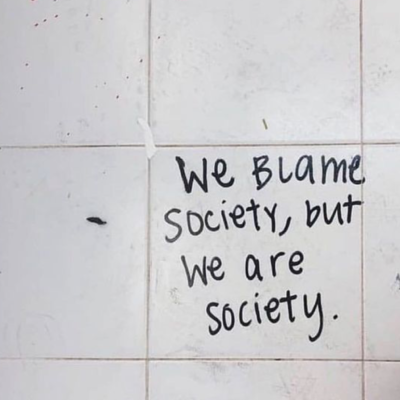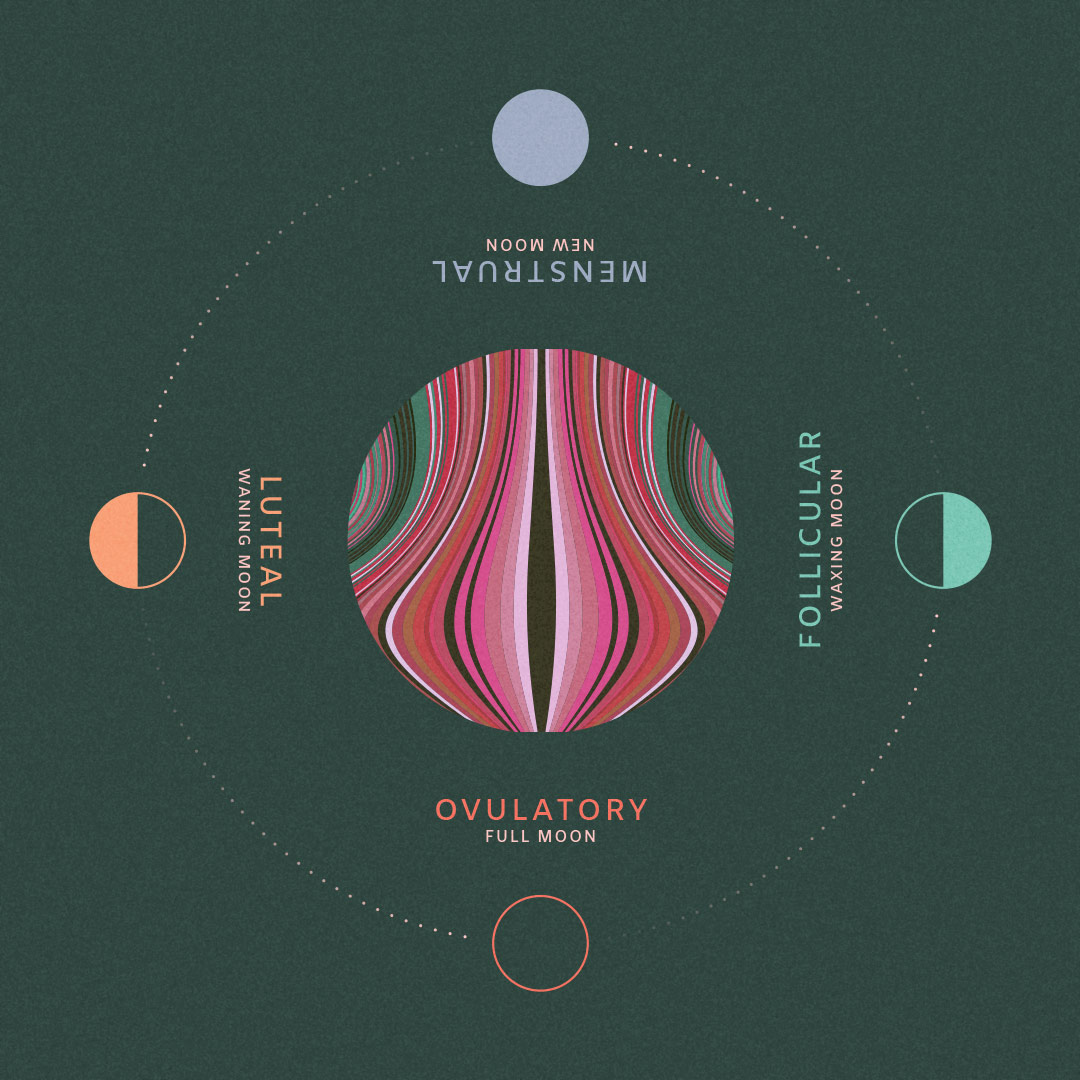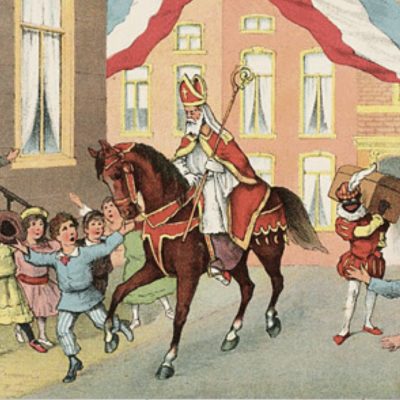
WTF IS A PERIOD, ANYWAY?
WTF is a series about education, or, in On Our Moon’s terms: wisdom. We’ve all got wisdom within, but there are simply some times in life where the words of an expert are what ya need. WTF offers info and insights from professionals about our cycles, bodies, and the world we live in. Get ready to explore everything from white privilege to womb healers, menstrual cycles to money.
I learned about my period the way most people my age did: in a classroom. One day our biology class was interrupted by an older woman with short, grey hair. She was there to teach us about puberty. While going through the list of changes, she tried to reassure us after each statement that this was all normal. No matter how many times she repeated it, the collective energy of the classroom was clear; apocalyptical fear set it. Our bodies would start producing sweat, and we would have to use products to avoid body odor. Our voices would change as our bodies grew taller. We would grow hair on our legs, our underarms, and our arms, and something called “pubic hair” would start to show up too. Our faces would be covered in acne. Girls would start growing breasts, and boys would get erections and sometimes ejaculate.
None of it seemed normal. After what felt like an eternity, she said the hard part was over. A huge sigh of relief was heard throughout the room. Finally we get to go back to being kids.
This feeling of relief was short-lived for the girls though. She excused the boys, and the girls remained in their seats, staying behind to learn about menstruation. In 15 minutes, she explained how often we would bleed, the cramps we would endure, and what products we could use to prevent leakage. She showed us how to use a pad and insert a tampon.
As an adult woman looking back, I find this infuriating. We had just learned that ejaculations were normal, however menstruation needed to be taught privately, and quietly, away from any testosterone. The message was clear: adolescence will suck for everyone, but girls have an extra disadvantage called menstruation. Periods were a flaw, something to be ashamed and embarrassed of. Best kept hidden, secret.
From that classroom to 28 years old, I continued to do what I was told: bleed once a month, hide any evidence of it, and stay quiet about it. Never did a doctor, teacher, or older woman explain the actual functions of my body, of my vagina, or of my menstrual cycle. The little part I knew involved bleeding, so I remained focused on that for 17 years. I never knew I had a cycle, or that there were four phases to my cycle, or that hormones would affect my moods. I most certainly did not know that educating myself would allow me to feel empowered or connected to my body, or dare I even say, rooted.
Learning about the inner workings of the menstrual cycle should be a crucial part of our education. We teach girls to be disconnected from their bodies, conditioned to think their bodily functions, fluids, and scents are shameful. And without educating ourselves, we carry these misinformed beliefs around with us in adulthood.
So this post is for those of you, who like me, are learning what we should have been taught many years ago. Since I am not a doctor, or someone qualified to teach you the specifics, I reached out to Dr. Pari Ghodsi, an OB/GYN practicing in Los Angeles. Dr. Pari is here to explain the four phases of our cycle‒ and not just the bleeding part.
-Alex
Original Illustration by Nick Pons
What Is A Menstrual Cycle?
I know that very few people have been taught the components of the menstrual cycle including; what is a normal cycle and what they should expect each month.
An average menstrual cycle, from the start of one menstrual period to the start of the next, is 28 days in length, but anywhere from 21-35 days is considered normal.
A menstrual cycle consists of four phases: the menstrual phase, the follicular phase, ovulation and the luteal phase.
Menstrual Phase
Day 1-7*. This is what is known as menstruation, or your period. Day 1 of your menstrual phase is also the first day of your cycle. A normal period can last anywhere from 3-7 days and you lose anywhere from 10-80 mL of blood. When you bleed, the uterus (your womb) sheds its lining. The lining was built up in preparation for a fertilized egg to implant and for a pregnancy to grow. Therefore if pregnancy does not take place, your body is signaled to shed the lining and for a new cycle to start. The first day of shedding is day 1 of the menstrual phase. During this phase you may experience menstrual cramps as the uterus contracts to shed the lining. This is largely in part from chemical compounds that are released called prostaglandins. This is why Ibuprofen helps with period cramps because it blocks prostaglandins from being made.
Follicular Phase
Day 1-14. This phase typically begins on day 1 of your cycle (so there is overlap with the menstrual phase) and ends with ovulation. During the follicular phase a hormone is released from your brain called follicle stimulating hormone (FSH), stimulating the ovaries to round up some follicles to make one dominant follicle to release one egg with ovulation. During this process estrogen increases and the lining of the uterus is stimulated to make a new lining. Estrogen levels are highest right before ovulation. During this phase you may feel more energetic and blissful due to the rising estrogen.
Ovulation
Day 14. The brain recognizes the rise in estrogen and produces another hormone named gonadotropin-releasing hormone (GnRH). GnRH stimulates another part of the brain to produce a hormone called luteinizing hormone (LH). A surge in LH causes ovulation. Ovulation occurs typically 9 hours after peak LH levels. LH is what is measured in home-ovulation kits. Progesterone also starts to increase around ovulation. Other signs of ovulation are thin mucus-like cervical discharge, which allows for better sperm penetration. During ovulation, the egg is picked up by the end of the fallopian tube and carried into the tube where it will wait to meet sperm. If it meets sperm and fertilization occurs, the fertilized egg will then travel down the tube into the uterus. A typical egg has about 24 hours to be fertilized. During this phase, you may feel a small cramp on one side with ovulation. This slight pain is known as mittleshmerz. Many women also report an increased libido around the time of ovulation. This may be nature’s way of increasing your chances of conceiving.
Luteal Phase
Day 15-28. The dominant follicle in the ovary that released the egg turns into something called a corpus luteum (kind of like a cyst, but a good cyst). The corpus luteum secretes progesterone. The progesterone levels are highest around day 24. The increase in progesterone is what is responsible for the breast tenderness and fullness that you may feel a week prior to your cycle. If there is no pregnancy, then the corpus luteum degenerates which means that progesterone levels drop drastically. During this phase you may experience symptoms such as cravings, feelings of sadness, and irritability due to the sudden drop in progesterone. The drop in progesterone also signals shedding of the uterine lining… and we are back to day 1!
![]()
Thanks to Dr. Pari! We hope this was insightful and educational, and encourages you to feel more empowered about your cycle and your body. If you have any questions for Dr. Pari, leave it in a comment below and she’ll answer them in her next post.
*Please note all of the above numbered days have been measured by a 28 day cycle.
Original ON OUR MOON Photography by Britney Gill
Editor’s note: We’re a genderless site, however Alex, or other writers in our community, may use gendered terms in their storytelling that aligns with their personal experience. In this case, I want to point that I was taught about menstruation in a binary way, but as adult, while learning and unlearning about gender, I realize that not only women bleed and not all women bleed.







LET'S TALK: